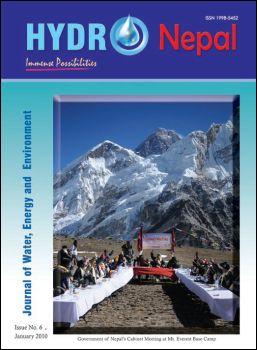Assessment of Trophic State of Lakes: A Case of Mansi Ganga Lake in India
DOI:
https://doi.org/10.3126/hn.v6i0.4198Keywords:
Eutrophication, Trophic State Index (TSI), Total Phosphorus (TP), Secchi depth (SD), Chlorophyll ‘a’ (Chl’a’)Abstract
Due to rapid growth of population coupled with urbanization, the water bodies, especially, rivers, lakes, ponds, reservoirs etc are deteriorating due to heavy pollutational stresses resulting in the scarcity of drinking water resources. The present paper attempts to review the work done on the development of TSI for assessment of trophic state of lakes and applicability of most important TSI methods for Indian lakes. The paper also deals with the revival of Mansi Ganga Lake in Mathura, especially, assessment of its trophic state based on the data collected for 2006-09. The results indicated that the lake was oligotrophic during 2006 which has become mesotrophic in the year 2008 showing increase in pollution. After the chemical treatment for the removal of algae, the lake water was drained and results of sampling done in 2009 (pre-monsoon) indicated it to be eutrophic. These calls for its immediate revival and accordingly, the conservation measure are suggested.
Key words: Eutrophication; Trophic State Index (TSI); Total Phosphorus (TP); Secchi depth (SD); Chlorophyll ‘a’ (Chl’a’)
DOI: 10.3126/hn.v6i0.4198
Hydro Nepal
Journal of Water, Energy and Environment
Vol. 6, January 2010
Page: 65-72
Uploaded Date: 24 January, 2011
Downloads
Downloads
How to Cite
Issue
Section
License
The copyright of the articles and papers published is held by HYDRO Nepal Journal.
The views and interpretation in this journal are those of author(s), and HYDRO Nepal does not bear any responsibility for the views expressed by authors in the journal.




